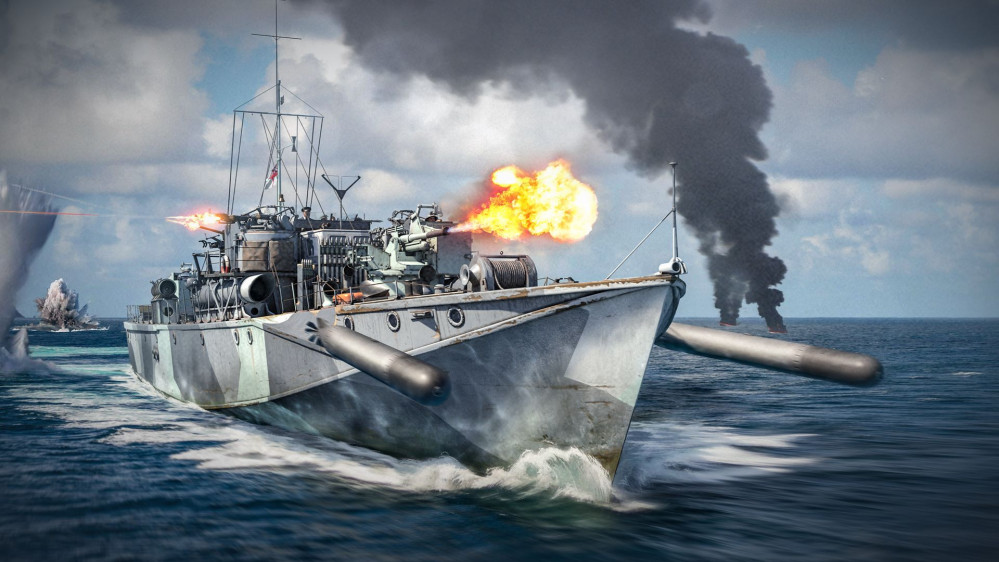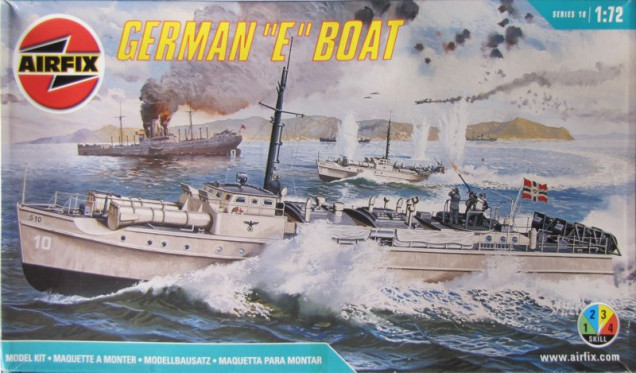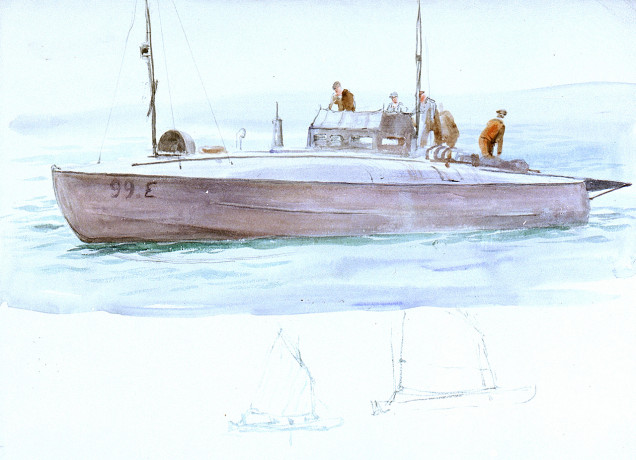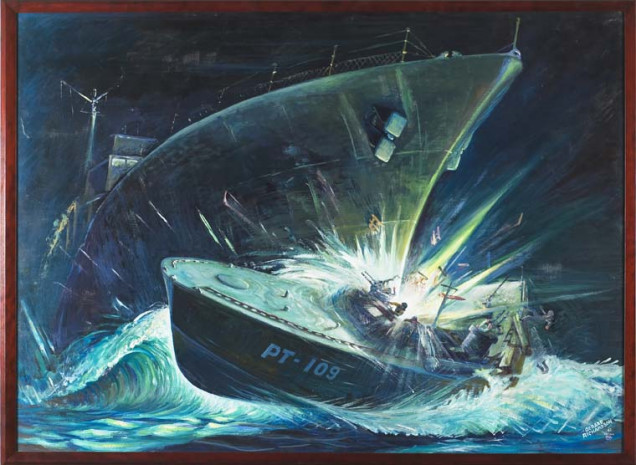
Bob C's Everything you Didnt Want to Know about British Coast Forces and how to play them.
Coastal Forces Tactics
For most people Coastal warfare if they are aware of it at all are taken in by the Image as shown in Part 1 on the Airfix box of boats charging into action, all guns blazing, shell splashes all around them as the target and its escort fires everything including the coal scuttle helmets at them.
In fact that is very much one of the early scenes in ‘They were Expendable’, to some extent the box cover on Cruel Seas could also give that impression.
Hollywierd may have done above for the dramatic effect, and it may have been true in some of the very early engagements particularly as the many of the early British MTB’s were modelled on the WW1 Coastal Motor boats which droped the torpedo out of the back and therefore charging forward intially at full speed was a necessity to avoid the ‘briefly ’embarrassing prospect of being hit by your own torpedo.
It was certainly the view that many of the Worlds Navies had of how they would be used to some extent based on how they envisioned the old Torpedo boats and Torpedo Boat Destroyers in Fleet actions.
To anybody reading that wants to play it the way fine have fun and I would not want to put you off but having played one game already you will find it fairly bloody , I sank my target but lost all my boats. Again fine if that’s what you want and for a quick evening game can’t fault you as you will be getting a game based on the few but fun movies on coastal warfare.
So far my project has been mainly about giving players enough background so you know what your lovely little models actually represent as they are not the normal Destroyer, Cruiser , Battleship , Aircraft Carrier that you may have envisaged when thinking of modern(ish) naval warfare.
But…….. Wait for it!
Bill Slim commander of the 14th Army in Burma in WW2 commented in his book on the campaign in Burma:
‘Why does the British Army always fight its battles in the Dark in the pouring rain, on a hill were two maps meet’.
For much of coastal warfare the above (apart from the hill) the above pretty much applies.
Not sure of exact figures but around 95% of battles fought by coastal forces were at night, though they did try to avoid the pouring rain as it generally meant bad weather, even moonlit nights were frowned on.
Ideally Torpedo boats liked to lay in wait either stopped or running silently at low speeds on known convoy routes. They would then fire the torps and if not spotted would slink away hoping that the escort would not spot them , and only racing away at top speed if spotted. . In some instances this was such a successful tactic that if the target was alone or had next to no escort the resulting explosion would be put down to mines. I have read accounts from Survivors of ships sunk in such actions that the first thing they knew was being woken up by a bang to find the ship sinking beneath them.
This was not an unsurprising mistake to make as a lot of coastal boat missions on both sides had involved laying mines in estuaries of the enemy’s ports.
Until the development of effective small radars even spotting the target could be very hit an miss as both sides were basically sleeping black cats in the dark. A primes example of this is the famous case on PT109 being cut in half at night by the very Japanese Destroyer it was trying to catch. The best that could be generally expected would be a possible movement of silhouette in the murk, and in fact most times the enemy was located by sound rather than sight.
If they still had torps unfired they would try it again if they were able to shake of pursuit in the dark. This was also the tactic if spotted before they were able to get into a suitable firing position.
British coastal forces had the added problem in that Germany had a small mercantile navy compared to the British Merchant navy at the time, so there were far less targets available to them than their German Adversaries and what their was had much heavier escorts on their coastal convoys often with only a couple of merchantmen escorted by about 10 or more escorts made up of Armed Trawlers , Corvettes not to mention S & R boats.
With the splitting of British Coastal Forces into MGB’s and MTB’s a favoured tactic particularly if engaging heavily Escorted German Convoys was for the the two types of flottilla to stalk the convoy from opposite sides and then the the MGB’s would charge in all guns blazing as per the image above to draw off the escort whilst the MTB’s would continue to quietly stalk their prey , loosing off their torps and slinking off in the confusion.
- In fact though engagements by both sides were actually rare, and being engaged by the enemy was rarer. Even then early in the war both sides motor boats carried insufficient firepower to really damage their opposite numbers, and most early damage on reading accounts tends to be from them ramming accidentally their own side , the dock , passing seagulls etc.
- In fact one of the 1st times British MGB’ managed to catch and sink an S-Boat had been when the German force had managed to ram each other in bad visibility and were then ‘bounced’ by a force of Gunboats led by Lt. Cmdr Hitchens.
‘Long periods of boredom punctuated with brief moments of sheer terror’, probably sums it up .
So if playing historical you need rules for night time with spotting rules a must.
Cruel Seas does have night rules but they are in the scenario briefs if you have not found them yet.





























![TerrainFest 2024 Begins! Build Terrain With OnTableTop & Win A £300 Prize! [Extended!]](https://images.beastsofwar.com/2024/10/TerrainFEST-2024-Social-Media-Post-Square-225-127.jpg)















































Leave a Reply